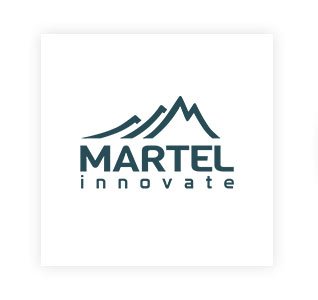TOGETHER ON THE EDGE

Together on the Edge. ‘Edge computing’ aims at pushing intelligence, data processing, analytics, and communication capabilities to where the data originates, that is, at network gateways or directly at endpoints. The aim is to reduce latency, ensure highly efficient networks and operations, as well as service delivery and an improved user experience. According to Gartner1, edge computing is among the Top 10 Strategic Technology Trends for 2020. Edge computing, also referred to as the ’empowered edge’, adheres to the principle of data gathering and processing located close to data sources. Edge computing increasingly relies on smarter sensors and devices forming the foundation of so-called ‘smart spaces’. By 2023, it is estimated that there could be more than 20 times as many smart devices at the edge of the network as in conventional IT roles. Smart spaces are physical environments in which humans and technology-enabled systems interact in increasingly open, connected, coordinated and intelligent ecosystems – whether in the home, car, office building, conference room, hospital or city. The core idea is that applications and services are moving closer to the people and devices that use them to allow for faster and better interaction. Through 2028, a steady increase in the embedding of sensor, storage, computing and advanced AI capabilities in edge devices is expected, requiring AI-enabled processing units. Within this context, one of the main challenges is managing and properly integrating all elements in such smart spaces – including people, processes, services and things – to ensure a more immersive, interactive and automated experience. This involves and boosts an increased convergence of a variety of digital enabling technologies, including data, processing, connectivity and intelligence that ‘meet on the edge’.
Fig 1: Applications timing and processing requirements along the Cloud-Edge continuum
Meeting on the Edge – IoT – Cloud
Much of the current focus on edge computing comes from the need for IoT systems to deliver decentralised and/or disconnected capabilities within increasingly complex scenarios with more and more sophisticated and powerful endpoints. The telecommunications industry and the financial and banking industry (BFSI) are the largest end users of edge computing, globally2. Another key sector is Industrial IoT, this drives the evolution of edge-oriented IoT architectures, with intelligence migrating towards a spectrum of smarter ‘things’ and services, which are expected to be connected in a dynamic flexible mesh linked by a set of cloud services. In this mesh (or digital continuum), the edge, near edge and far edge connect to centralised data centers, as well as to cloud services. The location of the edge determines the appropriate type of edge. How to get there is still a challenge as many technical aspects still need to be addressed – at the level of integration, federation of resources, protocols, operating systems, orchestration of services and processes in such a highly distributed environment. Cloud technologies work well to orchestrate services and provide business values such as geographic outreach (at least at the national scale), business continuity, and scalability. The key question is: how do you take this to the edge and is it enough to apply the cloud approach to the edge? A key benefit of the cloud is that it allows adopters to switch from capital expenditure (CapEx), i.e. upfront investment on infrastructure, to operational expenditure (OpEx), i.e. daily operational costs that can increase or reduce infrastructure needs. Today, there are no widely-available public edge infrastructures, so the most viable financial model for edge adopters is CapEx, i.e. investing in their own private edge infrastructures, with huge upfront costs that are clearly not affordable for small players. Together on the Edge. A big challenge, as highlighted in the NGIoT Roadmap for IoT Research, Innovation and Deployment in Europe, is ensuring the level of automation of cloud infrastructures as well as for edge infrastructures. Today, while self* capacities (where the * can stand for self-scaling, or self-healing – to get the service back online without human intervention) for clouds are a commodity, that is not the case for edge infrastructures that, due to their heterogeneity, distribution, on-off connectivity, and potentially scale, are more challenging to automate than clouds. Together on the Edge.
Meeting on the Edge – Data – Analytics – AI
While today, 80 percent of data processing happens in the cloud, this trend is expected to reverse in the next five years or so, due to a mix of technology push factors (the edge is becoming smarter and more performant) and market pull trends and requirements (security, privacy-, time-, safety-, and an overarching call for more environmental/energy-critical applications across various sectors). As a matter of fact, edge computing is increasingly deployed in industrial manufacturing, smart cities and self-driving cars – where edge computing ensures low-latency and resilient processing of IoT data in low-bandwidth and offline environments. This clearly requires real-time data management capabilities (more and more empowered by advanced analytics/AI) to be supported at the edge, bringing the processing to the data – rather than the other way around. Also in this respect, research and innovation challenges lie ahead especially in terms of data protection, data sharing, data persistency and data governance. A key challenge is ‘miniaturization’ of processing capacities to achieve real time decisions with limited resources. In the cloud, real time processing of data is easy, thanks to the availability of large processing capacities. However, in the edge (e.g. a car), it is not always possible to host a data center-scale computing environment. As highlighted in the NGIoT Roadmap for IoT Research, Innovation and Deployment in Europe, current research shows that AI specialised processors can achieve 10 times the performance of GPUs and FPGAs. In particular, Neuromorphic computing seems promising thanks to its principle of mimicking neurons to learn and compute. AI challenges related to the edge are not only related to processor architectures, but also to the middleware for data processing needed to support low latency which increases control over data access and processing to preserve privacy and security. In this sense, distributed or federated AI and analytics solutions are a clear focus area. Together on the Edge.
Meeting on the Edge – the 5G connection
With the advent of 5G, the time required for data to travel to and from a cell tower moved from the previous 4G time requirement of around 12-15 milliseconds to 2-3 milliseconds on 5G. However, for the data to travel to and from a distant data center it can still take 100 to 500 milliseconds, which for many latency-sensitive applications and services is not acceptable. So while 5G reduces the network latency between an endpoint and the mobile tower, only in combination with edge computing can it support a broad variety of use cases requirements (involving AR/VR, AI, robotics, IoT, etc. which require split-second decisions from computational resources). Beyond that as observed in the NGIoT Roadmap for IoT Research, Innovation and Deployment in Europe, 5G has still a number of limitations to support large scale deployment of wireless sensor networks (device to edge/cloud connectivity). On the one side, solutions like LPWAN are inexpensive to deploy at the large scale but offer limited bandwidth. On the other side NB-IOT and other IoT specific solutions under the 5G umbrella offer large bandwidth, but their deployment cost is still too high to allow for large scale deployment of wireless sensor networks. Such gaps may be mitigated by new frequency bands or novel protocols. Many open questions require dedicated work on how to modify some parts of the networks protocols, devices and infrastructures – in particular concerning the radio access network and network slicing related aspects. Together on the Edge.
Further reading:
Martel Innovate White Paper, IoT and 5G City IoT and Cloud Computing, the Way Ahead
1 Gartner 2020 Top 10 Strategic Technology Trends. Gartner’s Top Tech Trends to drive disruption and innovation over the next 5-10 years. 2 Edge Computing Market – Growth, Trends, and Forecast (2019 – 2024) June 2019
 Horizon Europe
Horizon Europe



